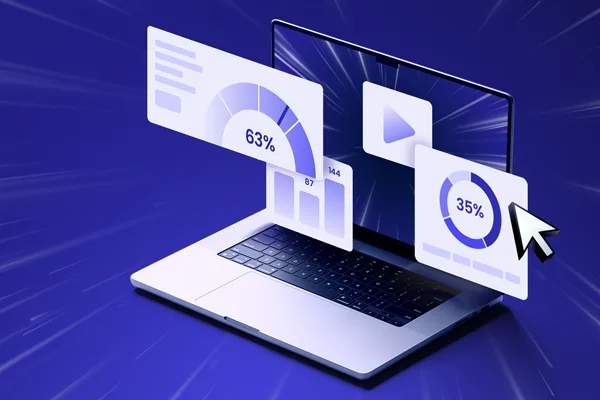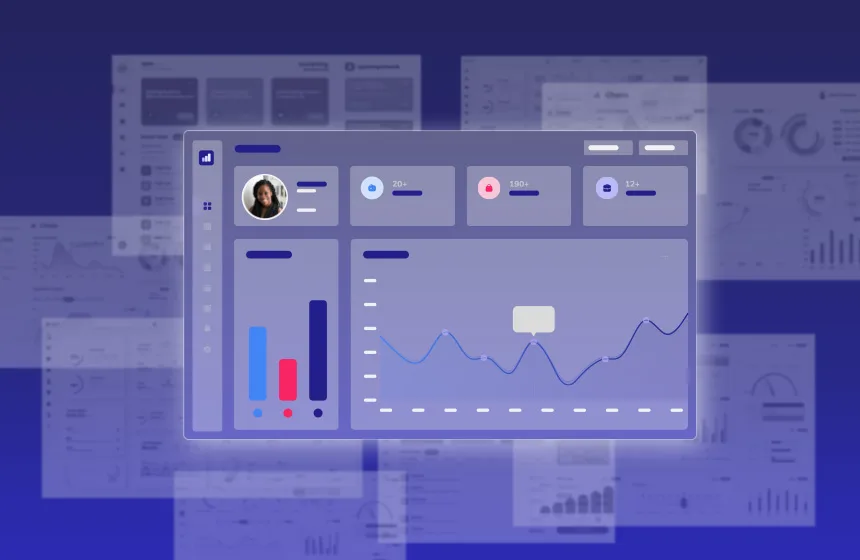Accelerate deals and increase win rates with the leading enterprise AI demo platform.
An Inside Look at Demo Software

May 2, 2025
Table of Contents
The demo software landscape has grown from a few vendors to more than 50 in the last five years. The market signal is clear: Sales and Solutions Engineering (SE) leaders need to scale their approach to product demos as they look to accelerate time to revenue (TTR) and improve go-to-market efficiency. Customers want to experience the product sooner, but it’s not scalable to have an SE deliver a demo on every prospect call.
Demo technologies promise to help bring product experiences to the forefront, but there are many different approaches, use cases, and vendors. It’s confusing.
We’ve started a new live webinar series to clear up the confusion: Demo Days. I co-hosted the first one recently with my colleague Kevin Holmes. (Fun fact: Kevin and I were both Reprise customers before signing on as employees — so we can relate to what you’re going through!)
The Demo Landscape: Use Cases & Vendors
In a nutshell, the categories of demo technologies include:
- Demo videos — for a simple product glimpse with limited to no interactivity
- Screenshot-based demos — for a product experience that’s a step up from your traditional product slideshow
- Guided demos — created by capturing the front end of your product with HTML
- Demos on your live application — this often requires data injection capabilities to create a tailored prospect experience
- Demos on an application clone — this involves recreating your product from the ground up, in a dedicated demo environment offering the highest fidelity experience
Assessing Demo Software
When looking for demo tech, SEs should ask themselves:
- What’s most important to the org: a top-of-funnel asset or a solution for live sales demos?
- If both are important, is the company okay using different tools for each? Or would they rather consolidate?
- How important is it that AEs are able to demo on their own?
- What are the areas of your product that are the hardest to demo?
Here are some other FAQs we’ve heard from SEs (along with our answers) as they evaluate vendors to determine which one will best meet their demo requirements.
How do you teach people delivering the demos to know where to click and what is interactive?
For demos that are meant to be delivered live, we recommend two versions: one with guides and one without. The clickpath is the same, but the guided version can highlight the places to click with “pulses” and provide a sample talk track.
Sellers then use the guided version as they ramp and the unguided version once they’re demo certified.
What’s the effort required to make sure app clones reflect the latest updates/features?
If you want to show a new feature in an app clone, you need to recapture it. Look for tools where “recapture” has been prioritized. For instance does configuration previously done “carry over”? Still, keep in mind that sometimes new configuration will be required, especially if the product update was significant.
If your product changes frequently and it’s important that you always show the most up-to-date version, we recommend trying Data Injection on a production environment.
Guided Demos are also significantly easier to “recapture” because you can simply update the individual screen or screens — no configuration required.
Costs aside, what are the advantages of cloning an app vs. using demo tenants and doing data injection?
Using an app clone has a few significant advantages over a production environment:
- Reliability: Live apps can be slow, buggy, and error-prone. Demoing on an app clone minimizes the risk of a bad product experience and ensures a fast, reliable demo.
- Repeatability: You always know what you’re going to see in an app clone. A live app could always have surprises in store.
- Scalability: App clones can be used by thousands of sellers simultaneously. Sellers who share a live environment are bound to “bump” into each other.
- Ability to take “real” actions: There are some things you can’t simulate on a live app. Think “financial transactions” or “stopping a ransomware attack”. Even seemingly “small” things like creating a dashboard also have consequences — it would need to be reset every time.
Do you see any pushback from Solutions Consultants who might be traditionally used to working from live production instances? Does it take internal selling to persuade them that a clone is a better, more reliable alternative?
It’s possible, but Solutions teams are often quick adopters of demo tech because they see the value — particularly as it relates to time-savings and reliability. Most Solutions Consultants are intimately aware of the time it takes to customize live production instances and the risks associated with them.
That said, some “internal selling” never hurts. Starting with a well-built “Golden Demo” and sharing live examples of it in action are a good way to persuade holdouts.
Can datasets be swapped out based on personas instead of verticals?
Yes! Data can be customized to tell a specific story that would resonate most with a particular persona, or datasets can be adjusted to speak to that persona’s typical workflow.
A Behind-the-Scenes Look at Demo Software
Navigating the demo software space is complicated. It makes sense that SEs would have questions.
Here are three things to keep in mind:
- Consider all the potential use cases. If you’re evaluating a tool for live demos, ask yourself if it’ll solve for website product tours and sales leave-behinds as well.
- Many vendors promise the same thing, with tech that they describe in eerily similar ways. It’s a different story behind the scenes.
- Ask for examples of customers who are demoing similar things as you. Need to show AI? Ask to see an example of an AI demo.
Want to learn more, ask your own questions, and see different use cases for demo software firsthand? Book a personalized demo.





